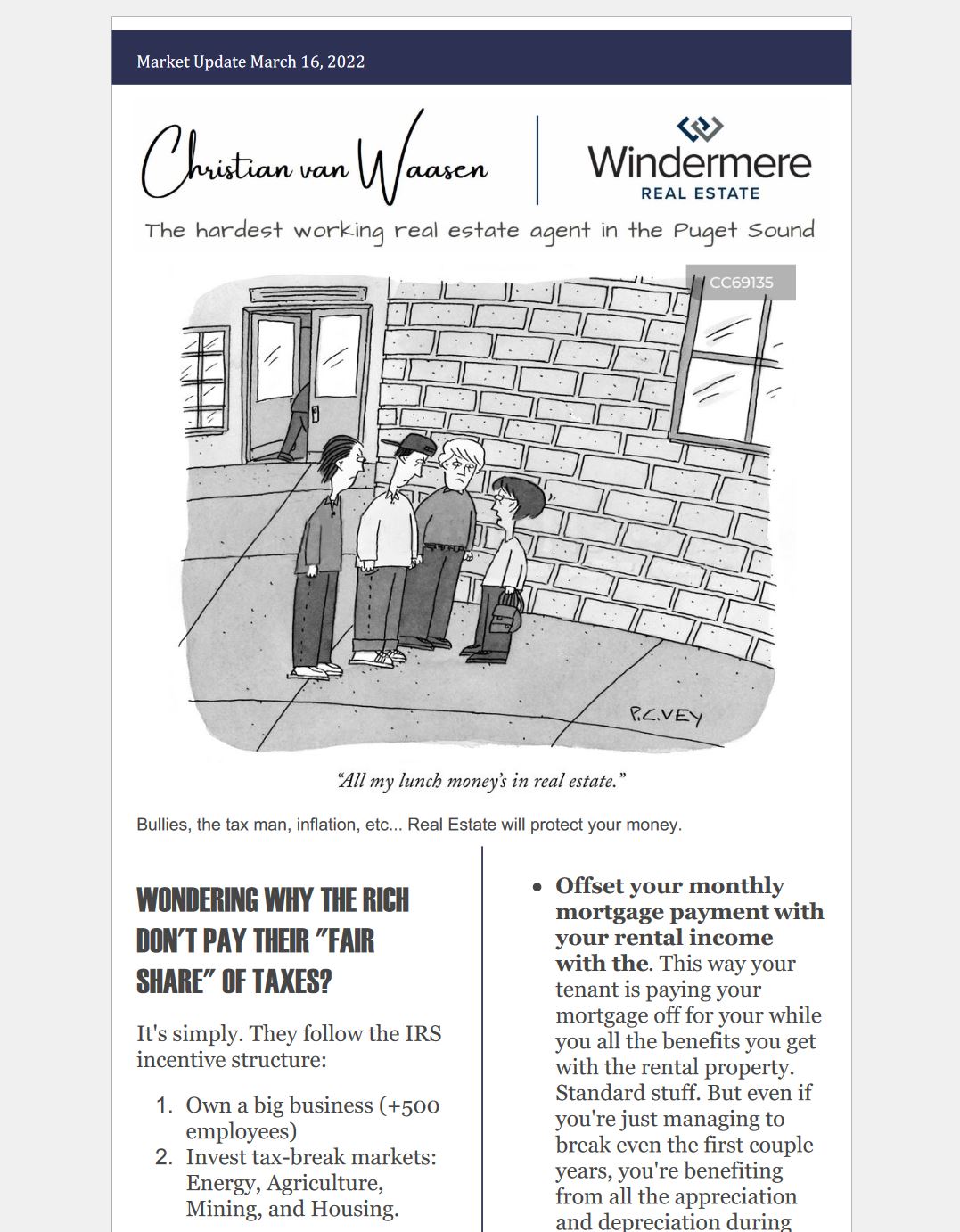
WONDERING WHY THE RICH DON’T PAY THEIR “FAIR SHARE” OF TAXES?
It’s simply. They follow the IRS incentive structure:
- Own a big business (+500 employees)
- Invest tax-break markets: Energy, Agriculture, Mining, and Housing.
Sadly, these tax breaks are limited to entrepreneurs and accredited investors… which most American’s are not.
However, there is good news. The power of real estate depreciation (the king of all tax deductions) is very much available to anyone, and it’s only one investment property away.
Below, I’ll cover how depreciation works and some additional benefits that owning investment property provides.
DEPRECIATION
If you purchased a single-family rental property this year, you are able to depreciate its cost-basis for the next 27.5 years. (That’s a tax deduction for the next 27.5 years!)
The amount you can depreciate is your cost-basis multiplied by your tax bracket.
Example:
Buy home for $500,000. Pay contractors $100,000 for repairs (sweat equity cannot be added towards cost basis).
- Total cost basis: $600k = ($500k + $100k)
- Your income bracket is: 37.5%
- $600,000/27.5 = $21,828
- $21,828 * 37.5% = $8,181
tax deduction per year
So how many $600,000 houses would you need to buy to fully offset your income taxes for the next 29.5 years?
There are other deductions available on top of this such as cost segregation (items inside property can be depreciated over 5 years) and itemized depreciation (e.g. old oven breaks, replaced with new oven). I’ll save these for a different day.
But that’s not all folks! Depreciation isn’t the only magically attribute of real estate.
RENTAL INCOME
This one is pretty straight forward. Money you get for renting out your property.
This is all well and good, but there are some few neat tricks that are not always considered when it comes to this long-term cash flow side of things, especially in our appreciation heavy market where positive cash flow is hard to find.
- Offset your monthly mortgage payment with your rental income. This way, your tenant is paying your mortgage off for you while you are receiving all the benefits from owning the rental property. Standard stuff. But even if you’re just managing to break even the first couple years, you’re benefiting from all the appreciation and depreciation during this time… while someone else is paying for these benefits.
- You can write off everything except for the principal pay-down on your mortgage. At the beginning, your principal pay down is very low (good for tax purposes). Over time, when you do start paying more towards the principal, you’ll be looking at increased appreciation is value and increased rental rates to offset the lower write-off.
- The magic of 30-year fixed rate mortgages. This will give you the lowest payment, so you can make sure the rent and expenses offset each other. You can also rely on the fact your monthly mortgage won’t go up, whereas the amount of rent you charge will. Even if you break even the first year, the margin between rent and mortgage will continue to widen, making the mortgage less and less of a burden each year (more cash flow each year).
1031 EXCHANGE
To tie this back to the beginning, the 1031 allows you to sell your investment property tax-free and roll it into another one (assuming there is no money left over which will get taxed). This is common for mom-and-pop owners moving to a different
state and wanting their rental properties closer, but it’s also allowing them to reset their depreciation.
For instance, if you bought a house in Oregon for $100,000 15-years ago (reminder: depreciation is determined by the cost basis) but it’s now worth $600,000, and you wish to sell it because you moved to wonderful Gig Harbor and want your rental property closer.
Well, not only can you sell your property and not pay taxes on your $500,000 gain, but if you roll it into a $600,000 Gig Harbor investment property.
You now get to restart your deprecation at your new cost basis of $600,000 (vs the old $100,000). That’s a yearly tax deduction difference between $8,181 vs $1,363 (assuming you’re in the 37.5% tax bracket).
 Facebook
Facebook
 X
X
 Pinterest
Pinterest
 Copy Link
Copy Link


